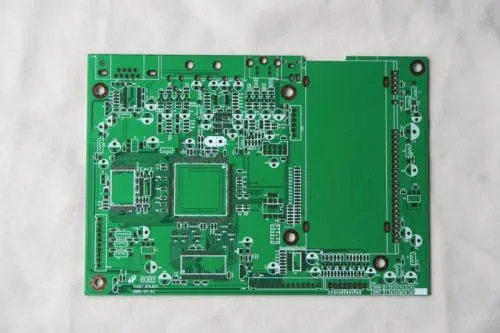1. Reliable electrical connection
2. Sufficient mechanical strength
3. smooth and clean appearance
Standard solder joints for electronic PCB components
(1) Bad terms
Short circuit: Not connected at two or more points on the same circuit.
Peeling: The copper foil of the line is detached from the bottom plate because of excessive heat or external force.
Little tin: pads are incomplete, or solder joints are not full and wavy.
False welding: the solder surface is full and shiny, but it is not melted or completely melted on the copper foil of the line.
Deweldment: element foot is detached from solder joint.
Dummy weld: solder is separated from component at lead.
Fillet welding: due to excessive heating flux loss caused by solder pull phenomenon.
Drawing: solder joints are not smooth and dull due to flux loss.
Element foot length: the length of element foot exposed to the bottom of the plate exceeds 1.5-2.0mm.
Blind spot: component pin is not inserted out of the board.

What are the common welding defects in PCB processing?
1. Bad condition: there are too many residues on PCB board after welding, and the board is dirty.
Results analysis:
(1) No preheating or preheating temperature is too low before welding, and the tin furnace temperature is not enough;
(2) the speed is too fast;
(3) tin liquid with anti-oxidant and anti-oxidation oil;
(4) flux coating is too much;
(5) component foot and hole plate disproportionate (hole is too large), so that flux accumulation;
(6) During the use of flux, thinner is not added for a long time.
2. Bad condition: easy to catch fire
Results analysis:
(1) The wave furnace itself does not have a wind knife, resulting in flux accumulation, heating dripping onto the heating tube;
(2) the Angle of the wind knife is not correct (flux distribution is not uniform);
(3) Too much glue on PCB, and the glue is ignited;
(4) the plate speed is too fast (flux is not completely volatile, dripping to the heating tube) or too slow (the plate surface is too hot);
(5) Process problems (PCB plate, or PCB is too close to the heating tube).
3. Bad condition: corrosion (green components, black solder joints)
Results analysis:
(1) Inadequate preheating causes much flux residue and too much harmful residue;
(2) Use flux to be cleaned, but not cleaned after welding.
4. Bad condition: electric connection, leakage (poor insulation)
Results analysis:
(1) PCB design is unreasonable
(2) PCB resistance welding film quality is not good, easy to conduct
5. Adverse phenomena: virtual welding, continuous welding, missing welding
Results analysis:
(1) the amount of flux coating is too little or uneven;
(2) Some pads or feet are seriously oxidized;
(3) PCB wiring is unreasonable;
(4) foaming tube blockage, uneven foaming, resulting in uneven flux coating;
(5) improper operation method when hand dipping tin;
(6) The chain Angle is unreasonable;
(7) The crest is uneven.
6. Adverse phenomenon: welding spot is too bright or not bright
Results analysis:
(1) this problem can be solved by choosing bright type or extinction type flux;
(2) the solder used is not good.
7. Adverse phenomena: smoke and taste
Results analysis:
(1) the problem of flux itself: the use of ordinary resin is larger smoke; Activator smoke, irritating smell;
(2) The exhaust system is not perfect.
8. Adverse phenomena: spatter, tin beads
Results analysis:
(1) Process: low preheating temperature (flux solvent is not completely volatile); The speed of plate running is fast, and the preheating effect is not reached; The dip Angle of the chain is not good, and there are bubbles between the tin liquid and the PCB, which will produce tin beads after the bubbles burst. Improper operation when hand dip tin; Damp working environment;
(2) PCB problems: the board surface is wet, there is water generation; The hole design of PCB air escape is not reasonable, resulting in air trap between PCB and tin liquid; PCB design is not reasonable, parts are too dense, resulting in air holes.
9. Adverse phenomenon: tin is not good, solder joint is not full
Results analysis:
(1) the use of double wave process, over tin flux active components have been completely volatile;
(2) the plate moving speed is too slow and the preheating temperature is too high;
(3) flux coating is not uniform;
(4) pad and component foot oxidation is serious, resulting in bad tin eating;
(5) The flux coating is too little to completely soak the pads and pins of the assembly;
(6) PCB design is not reasonable, affecting the tin of some components.
10. Adverse phenomenon: PCB solder film shedding, stripping or blistering
Results analysis:
(1) More than 80% of the reasons are problems in the process of PCB manufacturing: unclean cleaning, poor solder film, PCB board and solder film mismatch, etc.;
(2) tin liquid temperature or preheating temperature is too high;
(3) too many welding times;
(4) The PCB stays on the tin liquid surface for too long during the operation of hand dipping tin.
The above is the analysis of bad welding phenomenon and result in PCBA process.